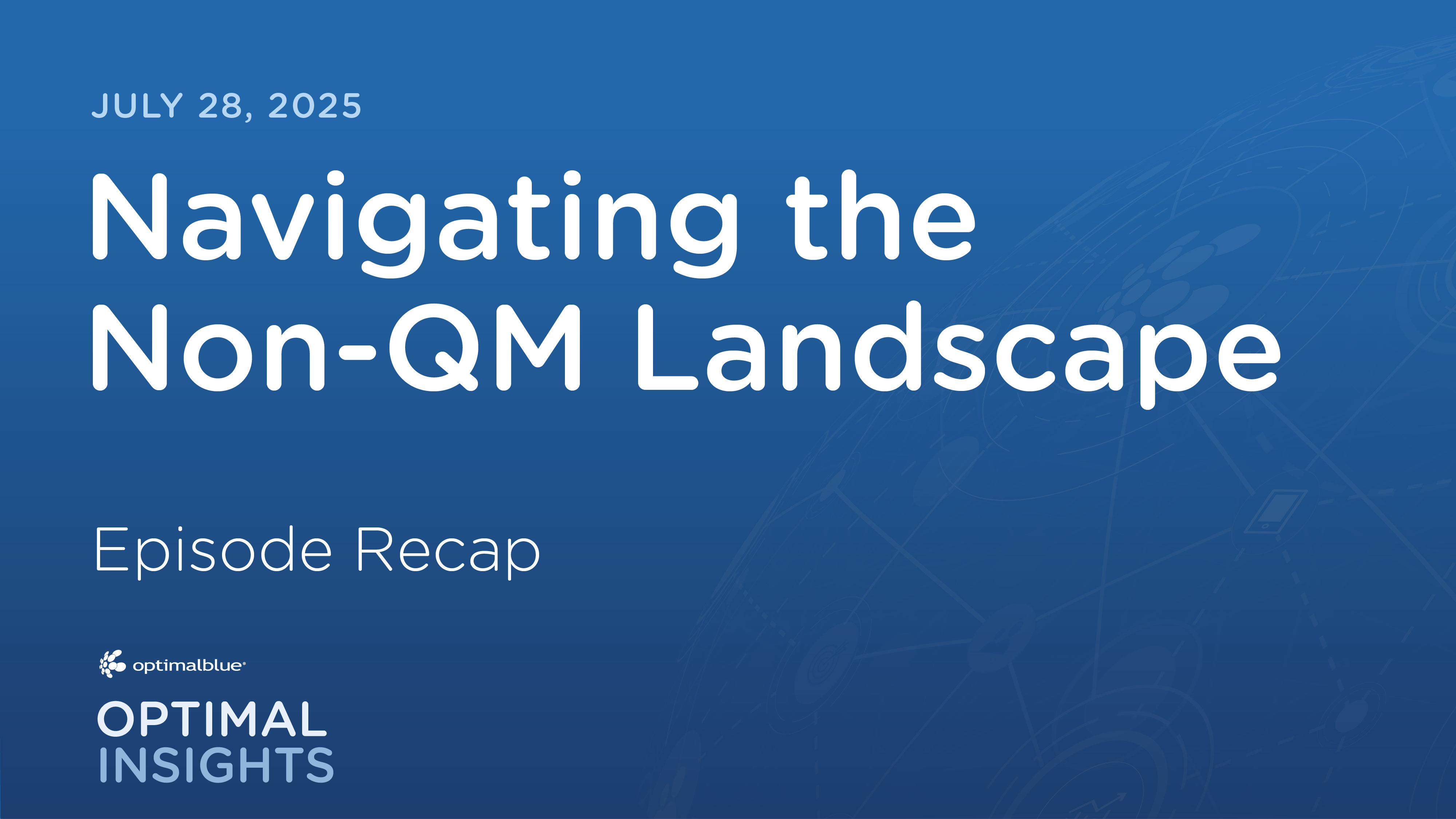
In the July 28 episode of Optimal Insights, Jeff McCarty, Alex Hebner, and Vimi Vasudeva discuss the week’s economic signals and market movements, while, later in the episode, Jeff and Vimi sit down with special guest Mike Vough, head of corporate strategy at Optimal Blue, for a conversation on non-QM lending.
Here’s what you need to know this week.
Market Signals: Stability Amid Complexity
The week opened with a relatively tight range in mortgage rates, with the OBMMI holding at 6.78% and the 10-year Treasury hovering around 4.41%.
Key Developments:
EU Trade Deal: A 15% tariff on most goods, with carve-outs for aeronautical parts and chemicals. Steel and aluminum remain at elevated tariff levels.
China Trade Talks: A potential 90-day pause is expected, with markets eyeing a future summit between U.S. and Chinese leadership.
Labor Market Watch: Non-farm payrolls are forecasted at 102,000, with initial jobless claims closely monitored for signs of labor market softening.
Fed Outlook: No rate cut is expected from the upcoming FOMC meeting, but dissenting voices like Waller’s may hint at future policy shifts.
Consumer Confidence & GDP: Anticipated upticks in consumer sentiment and a Q2 GDP rebound to 2.3% could influence market sentiment.
Understanding the Non-QM Mortgage Market
The second half of the episode pivots to a comprehensive exploration of the non-QM (non-qualified mortgage) space, led by Mike Vough, head of corporate strategy at Optimal Blue. With the non-QM market gaining traction, this segment offers a primer for lenders and investors alike.
What Is Non-QM?
Unlike QM loans, which adhere to strict DTI ratios and income verification standards (e.g., W-2 documentation), non-QM loans serve borrowers with unconventional financial profiles. These include:
DSCR Loans: Based on rental income from investment properties.
Bank Statement Loans: For self-employed individuals or those with significant liquid assets but non-traditional income streams.
Jumbo Loans: Exceeding agency conforming limits.
Other Niche Products: Including loans for international buyers, non-warrantable condos, and self-employed borrowers.
Why It Matters Now
The rise of the gig economy, entrepreneurial ventures, and side hustles has created a borrower segment underserved by traditional mortgage products. Non-QM fills that gap, offering flexibility while introducing new complexities in pricing and risk management.
Pricing & Hedging Challenges
Unlike QM loans, non-QM products lack a deep, liquid secondary market. There’s no TBA equivalent, which means:
Lenders must hold loans longer, often until they reach $50M+ in UPB before securitization.
Pricing models rely on blended spot rates from the Treasury or SOFR curves, often with 8–10% discount rates.
Hedging strategies include treasury futures, SOFR-based instruments, and custom DCF models.
Practical Actions You Can Take Today
Understand Your Borrower Base: Non-QM isn’t just for edge cases – it’s increasingly relevant for today’s entrepreneurial and gig economy borrowers.
Build a Pricing Strategy: Without TBA benchmarks, lenders must develop robust internal models grounded in real data.
Diversify Hedging Tools: Consider treasury futures, SOFR swaps, and other instruments to manage rate and credit risk.
Stay Informed: Monitor evolving investor guidelines and securitization trends to avoid delivery pitfalls.
This week’s episode underscores the importance of adaptability in a mortgage market shaped by macroeconomic uncertainty and borrower evolution. Whether you’re navigating trade policy impacts or exploring non-QM opportunities, staying informed is your best hedge.
Listen to the latest episode of Optimal Insights for deeper analysis and expert commentary. Available on all major podcast platforms: https://optimal-insights.captivate.fm/listen
The views and opinions expressed in this program are those of the speakers and do not necessarily reflect the views or positions of Optimal Blue, LLC.